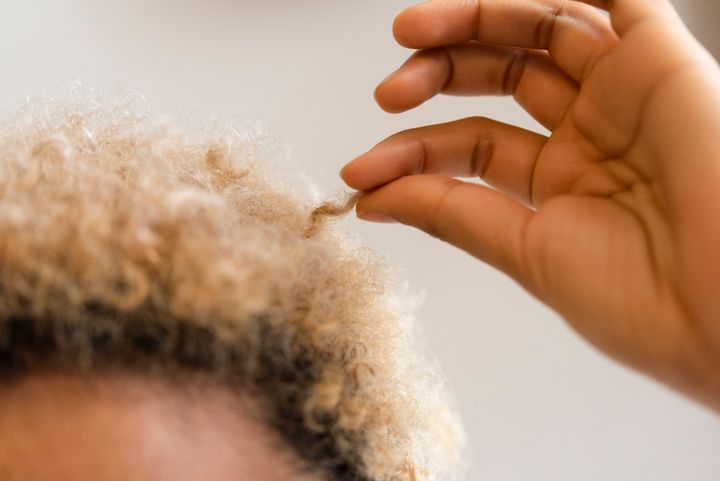
Some natural hair girlies out here might hate me for saying this, but it might be time to move past our obsession with the classification of our curl type. The curl pattern chart was a decent starting point for reintroducing natural Black hair and hair care to a very white beauty industry. But in 2023, when natural hair is finally becoming more mainstream everywhere from corporate offices to red carpets, we need a more nuanced way to discuss hair texture.
A recent TikTok from writer Lauren J. Gordan (on Holycurls’s account) tapped into a conversation that has been bubbling among Black women for quite some time now. While sharing the history of the chart, which reportedly was conceptualised by Oprah’s hairstylist, Andre Walker (who has publicly shared very problematic views about “type 4 hair”), she argues that “we should not be boxed into a one-type-fits-all” understanding of our hair. And I couldn’t agree more.
When natural hair trends surged in the 2010s, I was excited to join online communities that shared content on various styles and products after feeling pressured, for years prior, to achieve bone-straight hair using too much heat. My enthusiasm dimmed once I realised that the curl chart was kind of like the brown paper bag test of natural hair; it deemed more Eurocentric hair textures as “easier to manage.” There’s even a whiff of ranking: The fact that the chart lists looser curls as “type 1,” while tighter coils appear to be ranked in lower categories irks me to this day.
The new thirst for knowledge about your curl pattern emphasised using products and styles to achieve “healthier,” looser, more defined, bouncier curls. My desire, on the contrary, was to see Black people share honestly and openly about how to care for our hair in all its fullness and forms.
Interdisciplinary artist and licensed master hairstylist Kiing Curry (@bespokecurry) has created a space on Instagram to further educate people on how to care for their natural hair while rejecting Eurocentric beauty standards. In story posts and workshops, they offer disruptive conversations to encourage their followers to think critically about how texturism and other discriminatory practices are normalised in how natural hair care is marketed to Black people and how limiting it can be in a person’s natural hair journey.
Curry stresses that the chart is more about assessing your hair versus actually caring for it. “How could all of the folks — the millions of people who have curly hair, textured hair, regardless of race, etc. — how is it that they could go to one chart?” Curry said, adding that aspects like genes, medical history, pollution, geography and weather all play a significant role in the appearances of a person’s coils.
During their time as a hair care expert, Curry has seen the chart as less of an educational tool and more of a device to divide and imply shame. “When you think about how curls are presented, whether it’s in a magazine or in a movie, they’re really fat, round, bouncy … those are the curls that the dominant culture has told us that they prefer,” Curry said, echoing my sentiment. There’s a void when it comes to guidance on more Afro-textured hair or tighter curls, they added, which can make some people feel alienated.
Curry wants to remind those on natural hair journeys that it’s a very personal process and to approach it from a place of self-love and intuition. The curl pattern chart is an optional tool, not the holy grail. It forces us into a box with unhealthy standards.
While the curl pattern chart might have been a useful tool to reintroduce the world to the idea that all hair textures can be cared for, it has not helped us decolonize the way we see and behave toward people with tighter curls and Afro-textured hair. Because as long as we cling to notions that force us into categories based on Eurocentric values, the further we remain from the ultimate goal of self-acceptance and self-love. And for this reason, I’m doing away with it.